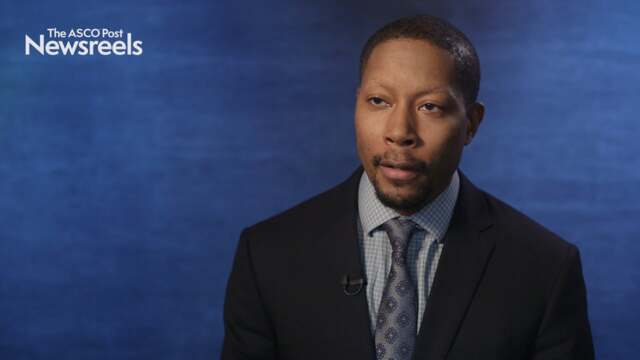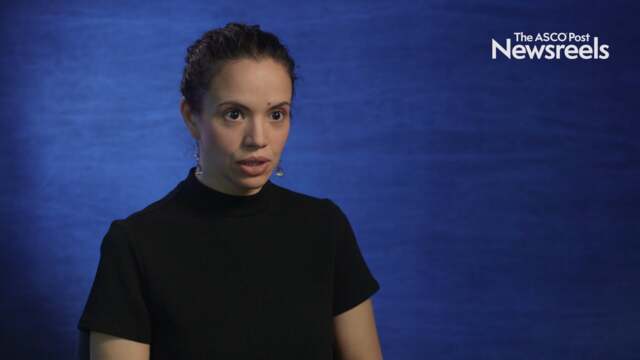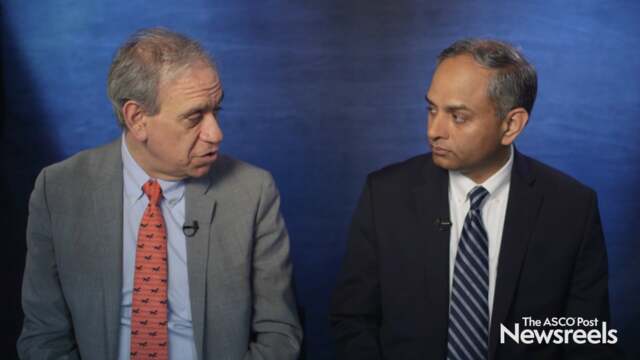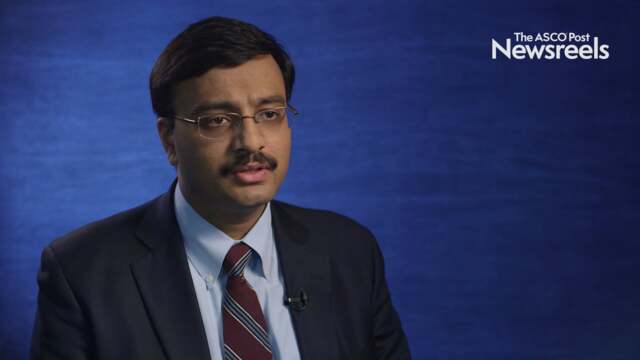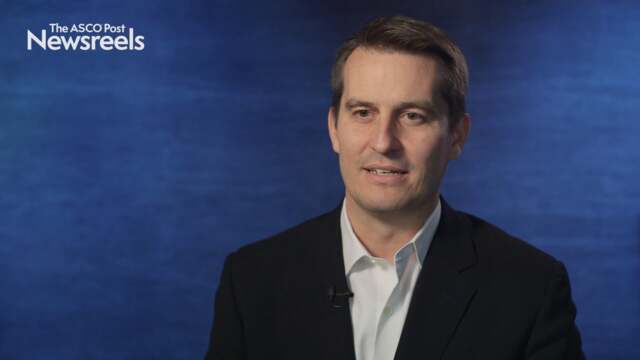Gilles A. Salles, MD, PhD, on Follicular Lymphoma: Long-Term Results From the PRIMA Trial
2017 ASH Annual Meeting
Gilles A. Salles, MD, PhD, of the Université de Lyon, discusses study findings on rituximab maintenance after induction immunochemotherapy and the significant long-term progression-free survival benefit over observation (Abstract 486).
Tycel J. Phillips, MD, of the University of Michigan Medical School, discusses the findings of the largest retrospective study to date of patients with intravascular diffuse large B-cell lymphoma, a disease with a poor outcome, partly due to the difficulty in diagnosing it early (Abstract 377).
Carla Casulo, MD, of the James P. Wilmot Cancer Center, discusses findings on POD24 as a robust early clinical endpoint of poor survival in follicular lymphoma, using data from more than 5,000 patients in 13 clinical trials (Abstract 412).
Andrew D. Zelenetz, MD, PhD, of Memorial Sloan Kettering Cancer Center, and Sattva S. Neelapu, MD, of The University of Texas MD Anderson Cancer Center, discuss long-term study findings on axicabtagene ciloleucel in patients with refractory aggressive non-Hodgkin lymphoma (Abstract 578).
Nitin Jain, MD, of The University of Texas MD Anderson Cancer Center, discusses phase II study results on combined venetoclax and ibrutinib for patients with previously untreated high-risk and relapsed/refractory chronic lymphocytic leukemia (Abstract 429).
Brian T. Hill, MD, PhD, of the Cleveland Clinic, discusses study findings that showed consolidation with autologous hematopoietic cell transplant in the first remission improves overall survival in patients younger than age 65 (Abstract 341).
